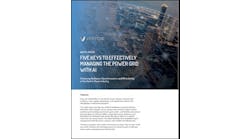Road in Albemarle County. *Courtesy of Charlottesville Albemarle Convention & Visitors Bureau
American Electric Public several years ago proposed a national transmission highway to move wind power across the US. The lines covered most of the map, but conspicuously lopped off the southeastern states. It seemed to say: “Green energy? Not here.”
Now a new report illustrates the same about the Southeast when it comes to energy efficiency. The 2014 Sustainable Energy in America Factbook, produced by Bloomberg New Energy Finance, includes a shaded graphic illustrating utility spending on energy efficiency by region: the paler the color, the weaker the energy efficiency effort.
The Southeast looks like it has the flu.
Its poor showing stems largely from a lack of state energy efficiency resource standards, according to the report. These mandates specify that utilities (and retail suppliers in restructured states) achieve a certain level of energy savings over time. Of the 12 southeastern states, only two have set the savings targets – Arkansas and North Carolina. In contrast, most states in the Pacific, Mid-Atlantic, and New England have the standards in place, according to the report.
But here’s the good news.
First, the Southeast offers an enormous, untapped opportunity for the energy efficiency industry. As the report notes, it accounts for 32 percent of US electric consumption, more than any other region.
Second, it looks like the Southeast is beginning – city by city – to realize that potential with community-based energy efficiency programs, as shown by a separate report issued recently by the Southeast Energy Efficiency Alliance. The analysis by the Cadmus Group found that 16 southeastern cities generated $3.87 million in economic output for every $1 million spent on retrofits. The cities achieved the savings through a Department of Energy program from 2010 to 2013.
The success of the program is bringing about a “fundamental change in perspective” about energy efficiency in the region, said Mandy Mahoney, SEEA president.
“While this region has traditionally lagged the rest of the country in energy innovations, the results of this ‘grand experiment’ in community-based energy efficiency programming have validated the powerhouse economic effect of energy efficiency, a vitally important tool to ensuring the prosperity of the Southeast,” she said.
The consortium of cities completed more than 10,000 building energy audits and 6,000 home and commercial building retrofits through a $20.2 million Department of Energy Better Buildings Neighborhood Program. The Southeast cities placed an impressive sixth out of 41 programs nationwide for number of retrofits completed. The cities include: Arlington, Va.; Atlanta, Ga.; Birmingham, Ala.; Blacksburg/Roanoke, Va.; Carrboro, N.C; Chapel Hill, N.C; Charleston, S.C.; Charlotte, N.C.; Charlottesville, Va.; Decatur, Ga.; Hampton Roads, Va.; Huntsville, Ala.; Jacksonville, Fla.; Nashville, Tenn.; New Orleans, La.; and Richmond, Va.
(Source: “Energy Pro 3 Report: Productivity, Progress, Prosperity for the Southeast,” Southeast Energy Efficiency Alliance.)
In addition, energy efficiency saw gains last year in Mississippi and Louisiana through rule and building energy code improvements. This year promises even more gains improvements through public/private partnerships and new utility programs, according to SEEA.
Getting the messaging right appears key to winning over the Southeast. Research by Susan Mazur-Stommen and her team at the American Council for an Energy-Efficient Economy shows that the region’s culture tends toward pragmatic solutions. “I don’t want to be a tree-hugger, but I want to do the right thing” she heard while doing interviews in the South.
Energy efficiency resource standards may never sweep the region. And Massachusetts and California (top two states for energy efficiency) probably aren’t looking over their shoulders expecting to see any southeast states ready to take the prize away. But the southeast states are in the race. They are just going to run it their own way.






